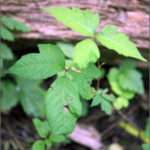For those of us who own small, curious pets, or who have equally small and curious children, the conditioning to keep poisonous substances out of the reach of the small and curious is well known. Locks are put upon cabinet doors and chemicals, medicines, detergents and soaps are kept far out of reach on shelves above our heads. Unfortunately, this may simply not be enough to keep the children safe. If you are a plant lover, chances are pretty good that you are harboring a major poison that could cause harm to either small children or small pets – or both – and you might not even know it. For the average adult, most of these plants will cause no greater damage than an upset stomach, but death may be the result for small children and pets you might have in your home. While there are multitudes of poisonous plants, for the purpose of this article, I will look at four of the most common poisonous houseplants.
Like most poisonous houseplants, philodendron is chosen as a houseplant because of its beauty. However, because this lovely house decoration contains calcium oxalates, it is as toxic as it is lovely. Consuming this plant can result in one or more of the following symptoms: difficulty swallowing, vomiting, and painful internal burning or itching.
Another lovely plant that is kept around the home, but not necessarily indoors is English ivy. Though it is a popular decorative plant and an easy to grow vine, English ivy is one of the most deadly of the plants that can be kept around the home, as it has been known to result in vomiting, comas, convulsions and paralysis. This deadly plant has been a particular bane to grazing livestock, who die by the hundreds each year because of this plant. English ivy is a bonus to any home because of its beauty, but caution should be taken that it does not present harm to any livestock or children.
A third popular but poisonous plant is the elephant ear. This exotic plant is widely loved because it is both easy to grow and grows to an astonishing size. Unfortunately, like the philodendron, the elephant ear is full of calcium oxalates, which means it has many of the same symptoms when ingested. Small animals or children have been known to vomit, have difficulty swallowing, and experience internal itching or burning.
A fourth example of a popular but poisonous houseplant is the always popular mistletoe. It is rare to find a holiday party that does not feature a prominent display of mistletoe, but care should be taken when discarding these lovely decorative plants. Mistletoe cantains both toxalbumin and pharatoxin viscumin. As a result, ingestion can cause something as insignificant as difficulty breathing, or something as severe as cardiovascular problems.
While the plants mentioned above are definitely four of the most dangerous ones, they are by no means the only poisonous houseplants in existence. Before placing your houseplant out on display, make sure it will not pose a danger to any curious pets or children who may come in contact with the plant.





